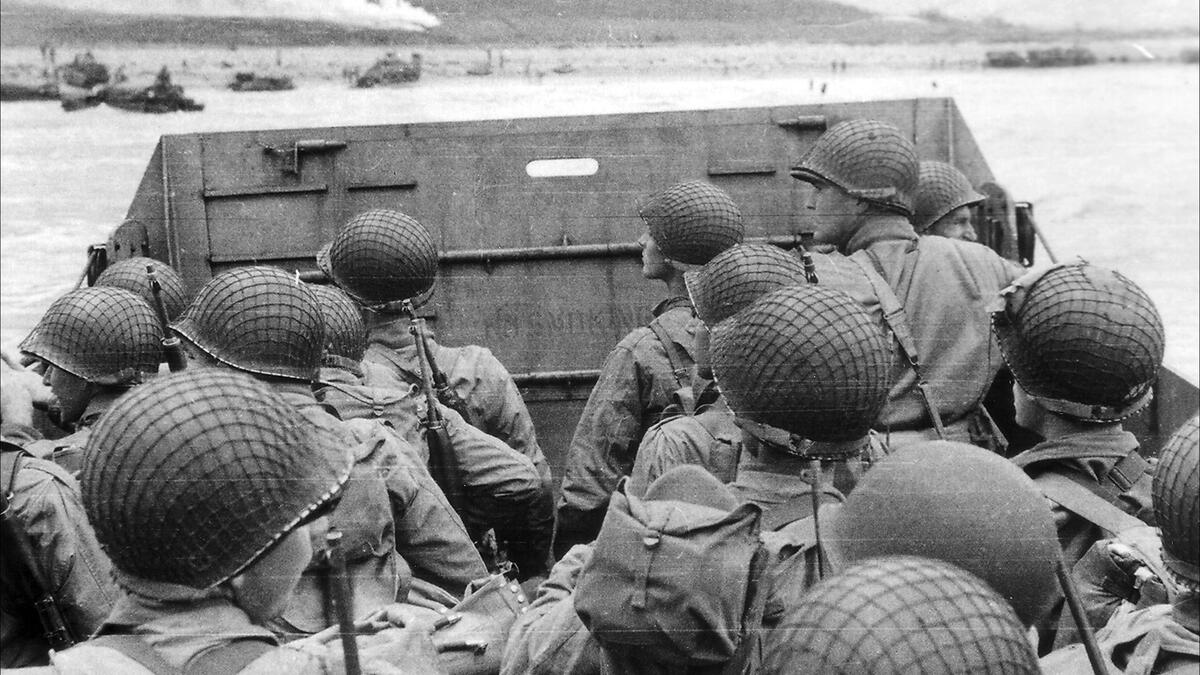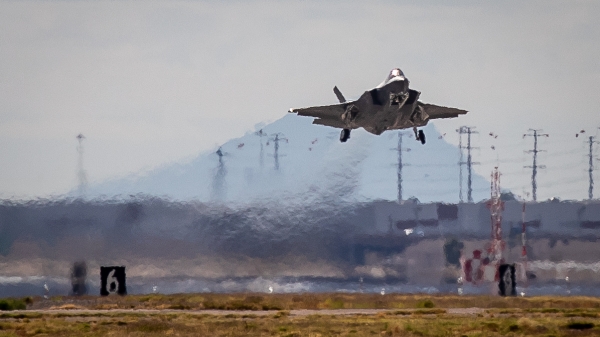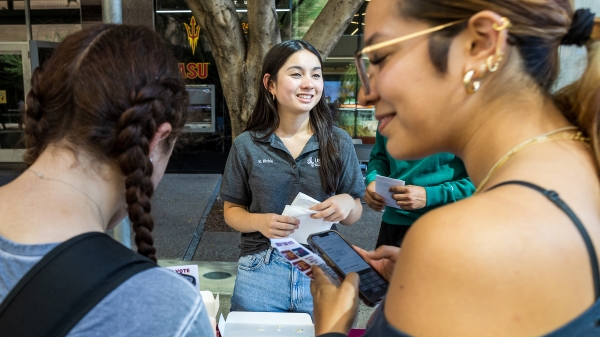ASU Online World War II master's program is 'one of a kind'

American troops approach the shore of Normandy in 1944. Photo courtesy the National WWII Museum
Arizona State University’s Online Master of Arts in World War II Studies program is described this way on its webpage:
“Are you interested in the diplomatic, cultural, social and economic impacts of World War II? If so, the Master of Arts in World War II studies may be an ideal fit. In this first-in-nation program, you’ll learn about the war through firsthand and scholarly perspectives and examine its geopolitical and cultural aftermath.”
Jacob Flaws, a faculty member in the program and an assistant teaching professor in the School of Historical, Philosophical and Religious Studies, offered a shorter, three-word description.
“It’s really cool,” Flaws said.
ASU News spoke with Flaws about the program and the 80th anniversary of D-Day on June 6.
Editor's note: Answers have been lightly edited for length and clarity.
Question: According to a 2023 Department of Veterans Affairs report, of the 16.1 million Americans who fought in World War II, only 119,550 are still alive. As we lose that firsthand knowledge, is something like the World War II studies program even more critical?
Answer: Absolutely. The living links are increasingly going. There’s going to be a time soon where we’re not going to have those living links, and if studying history shows us anything, it’s that history does kind of tend to repeat itself. We’re saying this is the time to talk about the war, some of the things that happened versus the mythology and continue to preserve those stories of the survivors.
Q: Can you provide an overview of the program?
A: It’s the only one like it in the world. Essentially, we partner with the National WWII Museum in New Orleans. The partnership started about five years and was something (ASU) President (Michael) Crow was really big on. He had met with the CEO of the museum, and they said, "Hey, we have two great institutions. Let’s find a way to collaborate.” So we’ve been together ever since.
The program itself looks at all different phases of the war, from questions of culture, society, mythology, monuments — everything that you might think of that pertains to the war that our students are really, really excited about. Because it’s an online master’s, we have students from all over the world, which makes the courses a lot of fun. We have students from Europe and from Asia, and they bring their different perspectives to the class.
Q: Because it’s an interdisciplinary program, do you get a good cross section of students from different majors?
A: We have a very unique population, and the cohorts are becoming more diverse the longer the program is out there, and people know about it. The first wave of students happened through COVID, and I think many of them came through the museum. Now we’re starting to see a lot of people who have been successful in their careers and are doing this for their own edification.
Our biggest cohort is teachers who teach this stuff. But we’re also more and more seeing students who have just graduated with a history degree and want to go on to a master’s or PhD. We’ve had a lot of students actually move on to additional graduate work from our program.
Q: There’s a lot of misinformation being spread about World War II and the Holocaust. Does your program address that?
A: Absolutely. The biggest thing I think we face is that there just aren’t witnesses anymore. Same with survivors of things like the Holocaust. So it becomes more important than ever that we address things. The Holocaust is the most well-evidenced genocide in history, and we present that evidence. We actually are launching a Holocaust and genocide studies certificate at the graduate level that’s going to start this fall. It’s based out of the World War II studies program, but it’s going to be a history graduate certificate. Our anticipation is that lot of our World War II studies students will take that, but we’ll also get a lot of history master’s students.
Q: Can you expand on the partnership with the World War II museum? What does that entail?
A: The reason we partner with the museum is that they have an excellent oral history team whose dedicated jobs are to go across the country and across the world and interview veterans whose stories have never been told. They’re creating his massive database of video testimonies. In partnering with them in our program, our students can see these stories, which helps them think critically about the war.
Q: We’re coming up on the 80th anniversary of D-Day. What should that day mean to us?
A: This is the most important day in World War II from the Western perspective. The reason is, that’s the day that the U.S. made good on its promise to go restore freedom in Europe to the people who were oppressed by the Nazis. This was the biggest amphibious invasion in history. It was dramatic. We landed on the beaches and almost got repelled into the waters. But we stuck it out. That was the start of the liberation.
More Local, national and global affairs

Thunderbird at ASU, AUK student appointed as Ukraine’s deputy minister of education and science
Nadiia Kuzmychova, a student in the Master of Leadership and Management (MLM) program at Thunderbird School of Global Management at Arizona State University and the American University…

ASU creates pathways to public service careers for military students
The School of Public Affairs at Arizona State University is making careers in public service easier to access for military students.Next year, the school will start holding graduate courses on site…

Minting community leaders and stellar citizens: ASU’s Public Service Academy approaches 10-year milestone
Airports that are easier to navigate.Health care that is simple to access.Helping underrepresented youth reach college.These are realities that alumni of Arizona State University’s Public Service…